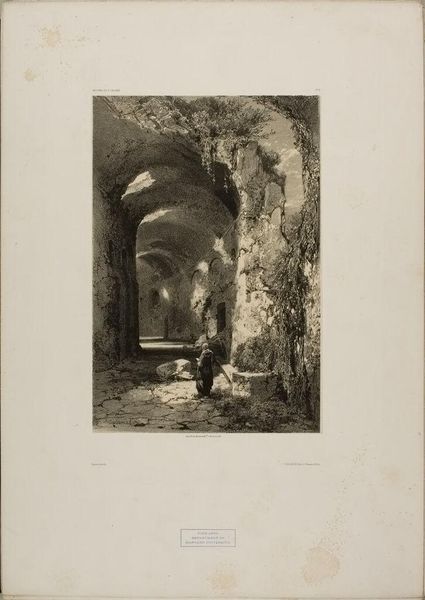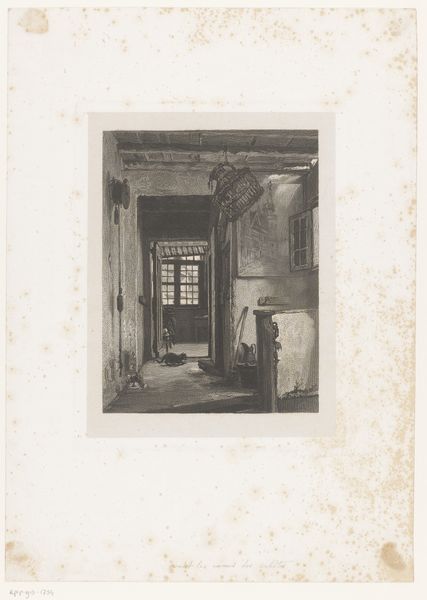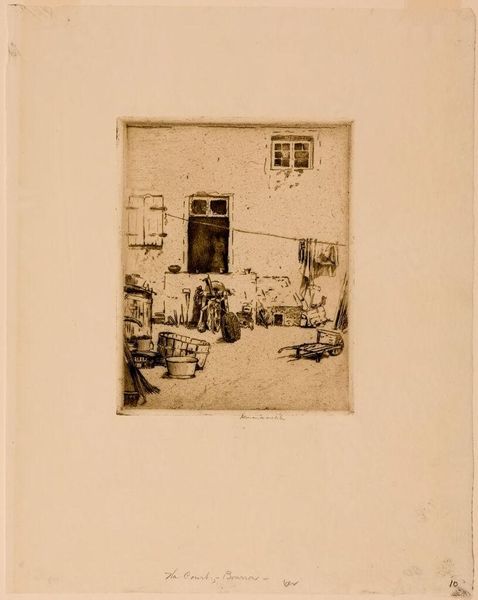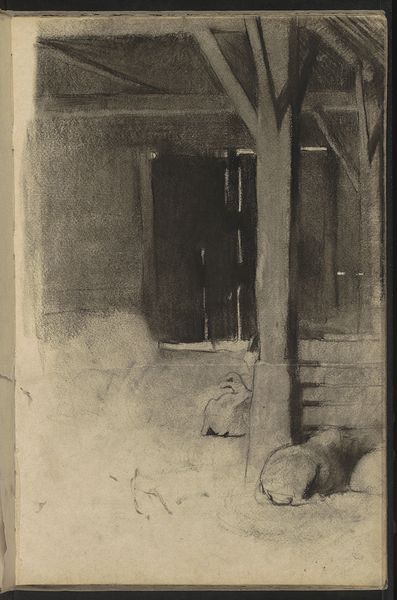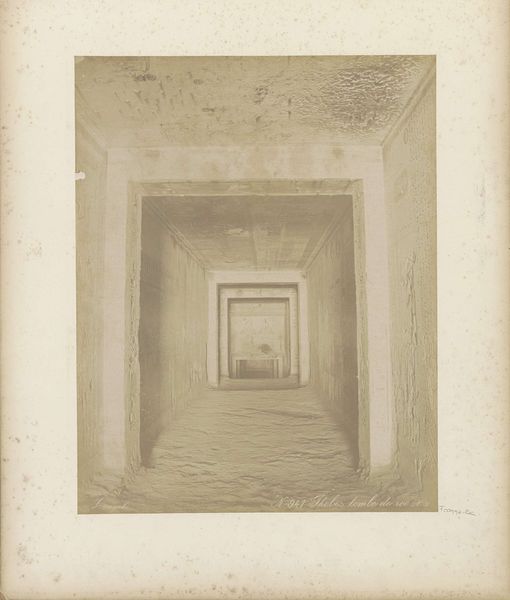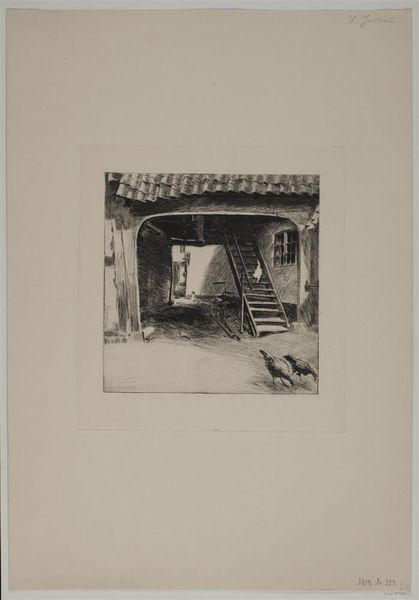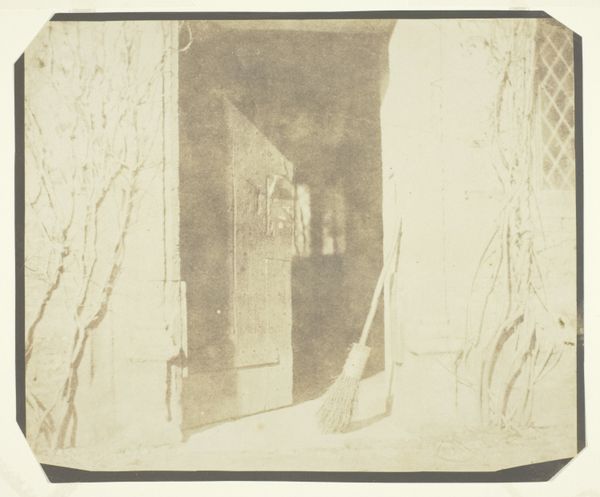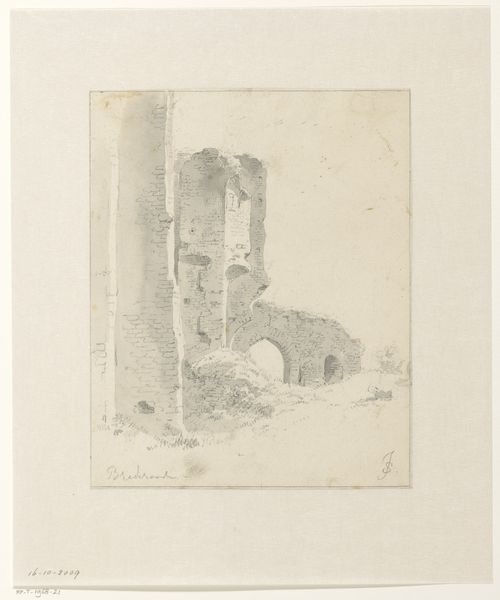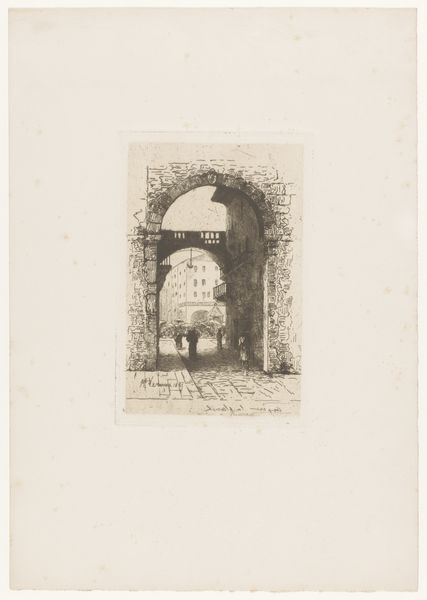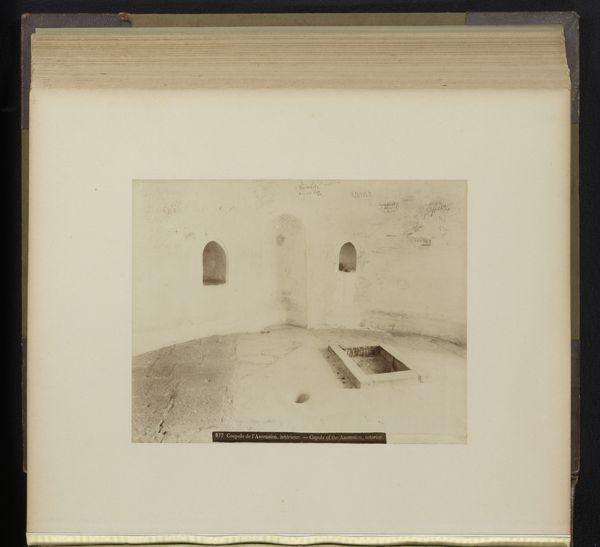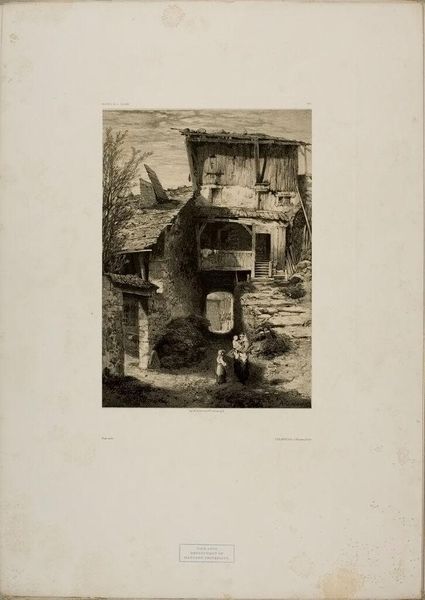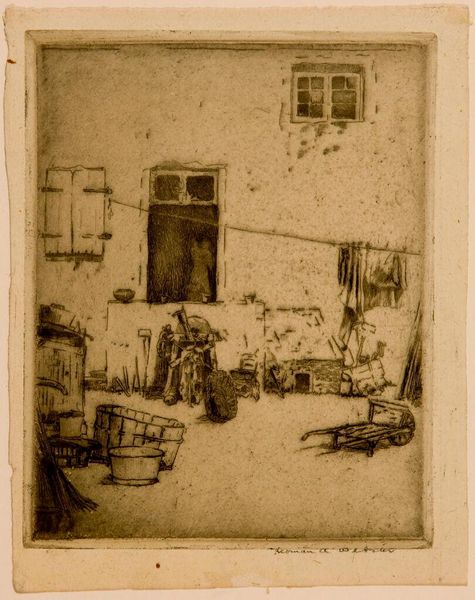
Copyright: Public Domain: Artvee
Curator: Here we have James Abbott McNeill Whistler's "A Doorway in Ajaccio," created in 1901. It's a beautiful watercolor. Editor: It feels like a faded memory. That soft palette and undefined space create a mood of wistful reflection, like peering into another time. Curator: Absolutely. Doorways are potent symbols, portals between spaces, eras. Whistler was drawn to them throughout his career, wasn't he? The idea of crossing a threshold and the narratives imbued within those spaces... Editor: And what lies beyond this doorway? Ajaccio is the capital of Corsica, after all – a place steeped in history, having been ruled by many empires, including being Napoleon's birthplace. Are we seeing an idealized or romanticized colonial space? What social interactions took place around the doorways depicted? I can see a human presence at the back. Curator: Interesting, and relevant considerations. Symbolically, this almost monochromatic color choice does allow the scene to fade into obscurity, as if memory plays a key part in seeing clearly. He uses such delicate washes of paint. It seems almost incomplete, open to interpretation. What emotions would people in Ajaccio feel looking at this now, in the context of rising nationalist sentiments, class divides, or post-colonial reflection? Editor: Well, perhaps a complicated mix. There’s something melancholic about the restrained palette, though also a certain stillness. It allows for a focus on the formal aspects, the structure, the line. This doorway isn't just about access. Who has it? From whom is it forbidden? I believe a feminist lens is applicable, analyzing it under postcolonial theories which examine the legacy of colonial rule and how cultures negotiate it through imagery, since art never exists in a vacuum. Curator: Exactly, that's what I mean by visual continuity. In some sense the memory remains incomplete in Whistler’s work. It creates a liminal space for discussion even a century later, like that moment between waking and dreaming. We find it both specific and universal, historical yet perpetually present. Editor: Ultimately, thinking about the history and possible readings enriches the quiet intensity of the artwork, doesn’t it? Curator: Precisely. The emotional symbolism of his image is layered; as well as the potential social contexts to explore that makes looking and learning from artworks like these compelling to analyze for modern viewers like us.
Comments
No comments
Be the first to comment and join the conversation on the ultimate creative platform.
